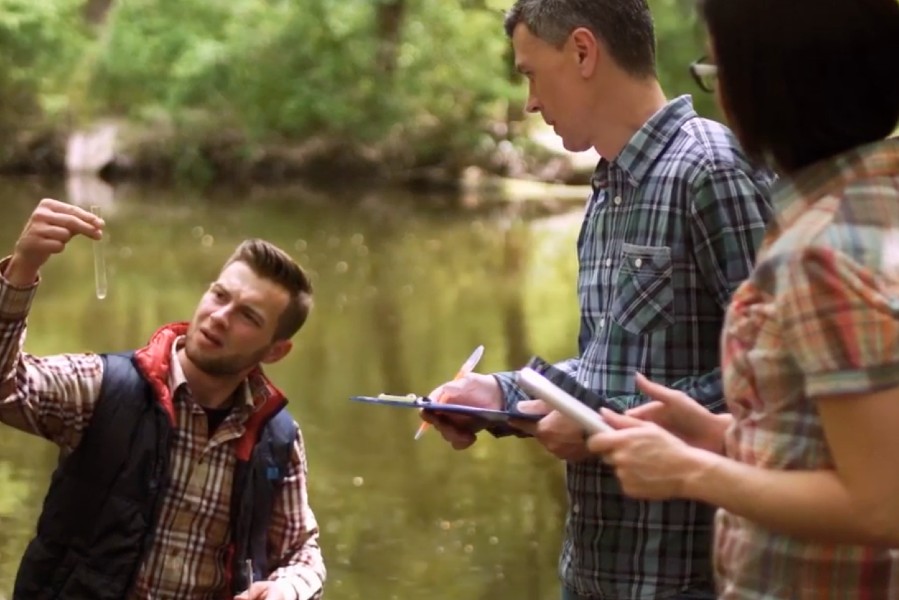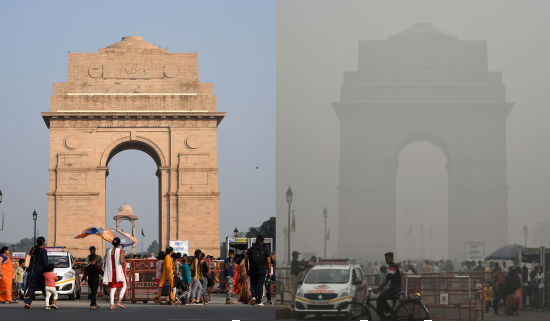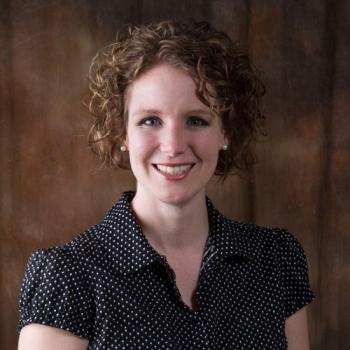Earth Day 2020: Pandemic response has impact on climate
On this 50th anniversary of Earth Day, we take a look at the impact of COVID-19 on our planet.
Kim Chaudoin |

While millions of people across the globe have been isolated at home for a period of several weeks as the world fights the COVID-19 pandemic, the change in activity has had a noticeable effect on the planet.
According to Scientific American, geoscientists have noticed a reduction in seismic noise because of the changes in human activity which indicates that the Earth itself is moving a little less. Vibrations caused by moving vehicles and industrial machinery cause Earth’s crust to move.
And as people drive less, flights are grounded and industries grind to a halt, emissions have fallen. Reports from around the world have shown photos from New Delhi, India, often considered one of the most polluted cities on Earth, showing blue skies allowing some residents to see the Himalayan Mountains for the first time. In Venice, Italy, canal water is so clear that fish can easily be seen.

Since communities around the world have been in isolation during the COVID-19 pandemic smog in cities such as New Delhi, India has cleared.
“Stunning images emerged really early on in this crisis when factories around Wuhan, China shut down in January. Aerial images of that city showed transformation within days of those factories being taken off line,” said Emily Stutzman, assistant professor of sustainable practice and director of the Institute for Sustainable Practice’s undergraduate program. “It was exciting to think that that impact was going to emerge everywhere.”
“I’ve seen beautiful images of so many places around the world,” she continued. “The skyline of Los Angeles looks completely different today than it normally does. That is the impact of cars not being on the road and fewer airplanes in the sky. What we are seeing in Wuhan and India are the impact of vehicles not being on the roads but also factory production slowing and a reduction in industrial pollution.”
One of the silver lining lessons in what the world is witnessing by this relatively sudden change in the environment is a lesson that positive impact can be made.
“Honestly I’m not surprised at how quickly our activity can have a positive impact on the environment because I have seen it happen so many times,” encouraged Stutzman. “However, when I first started studying and observing how forests or rivers or a species can recover, it was surprising to me how quickly ecosystems respond. When the right elements are put in place, or the harmful elements removed, the response can be so fast.”
To illustrate this phenomenon, she used the example of a bathtub.
“If the water is coming into the tub at the same rate that the drain is draining, when you turn off the tap the drain still functions in the same way,” she explained. “You can drain all of that pollution out of the environment really pretty fast when you ‘turn off the tap.’” In the case of air pollution, with much less pollution being released, biological and chemical cycles continue and aren’t outpaced like they are during “business as usual,” and we can more clearly see how pollution is removed from the atmosphere.
Impact of telepresence
In her sustainability courses, Stutzman uses a research project by Paul Hawken, the Drawdown Project, as a resource. In this meta-research project, Hawken and his team set out to answer the question “What would it take to reverse climate change?”.
“What they did in this project was to review a large body of research that has been conducted suggesting specific activities that would have a positive impact on literally reversing climate change,” explained Stutzman. “What’s exciting to observe is that several of the solutions in this project are being implemented just as a function of the new ways that we are all having to work right now to stop the spread of COVID-19.”

Emily Stutzman
The project found that telepresence, with its associated reduction in travel-related emissions, has a meaningful impact on the environment and it is something many people around the world are using now in this time of remote work.
“This crisis has demanded that we overcome the learning curve related to telepresence. Companies have made the investment to implement this change. Their people are getting used to it. It has changed the social practice of people not meeting face-to-face,” said Stutzman. “I’m excited about the ways this technology will change the way we work in the long term.”
Stutzman said she believes among the lasting impact of this technology will be that more conferences and meetings will take place using telepresence instead of people having to fly in from different parts of the country or world.
“The technology is there for us to do this well virtually,” said Stutzman. “COVID-19 precautions along with this technology is accelerating telemedicine. More and more people will be seeing doctors by screen because it will end up being more convenient, less expensive, and will also provide the quality of care for many health concerns.”
People, Planet and Prosperity
The focus of Lipscomb's Institute for Sustainable Practice is to demonstrate the value of sustainability for people, the planet and prosperity. Stutzman noted a particular area of concern during the pandemic is the people aspect related to sustainable practices and being equipped to thrive in their environment.
A particular concern are residents of rural communities where access to high speed internet is not readily available and a number of hospitals have closed. Tennessee is one of the top ten states in the country for rural hospital closures.
“A lot of the positive changes are yet to be seen,” admitted Stutzman. “But I hope we as a society will invest more in rural areas and telepresence has the potential to accelerate that process. But investing in high-speed internet in rural areas will be necessary for our recovery. In these areas it’s not uncommon for residents to have to sit in the parking lot of a McDonald’s to access the free WiFi to be able to upload homework assignments or to be part of a Zoom meeting.”
“If we are willing to collectively recognize that high-speed internet is an essential infrastructure component, then that can go a long way to increase access to so many things … economic development, business, telemedicine, health, education, flow of goods and services,” she continued.
But Stutzman said she is also excited about the social connections fostered during this time especially with those in our own neighborhoods.
“More people are walking on their streets and interacting with their neighbors,” she noted. “Those positive social bonds are increasing.”
In the coming months and years Stutzman said there will be numerous research studies and data that will emerge about a range of impacts and effects of the pandemic on various aspects of the environment and community that will lead to new ways of doing things at the micro and macro levels.
“This experience has exposed that we are all more vulnerable than we thought we were. It highlights the interdependencies between all humans … that it really does matter if restaurant workers have sick days available or access to health care,” she said. “We are all more vulnerable when any one of us is more vulnerable.”
Bringing the 'text book' to life
The impacts of the pandemic response on communities and the environment have provided real-world learning opportunities for Stutzman’s students particularly in her urban sustainability class who she said are making connections about the values of parks and green spaces and the ability to have walkable, pedestrian friendly neighborhoods as well as how materials and products move through ecosystems.
“Making these connections help our students better understand the importance of designing our systems — whether it’s our homes, our lives, our business systems — in such a way that they are resilient so they can respond to a crisis or even just to a comparatively less severe change to a city such as the tornadoes that came through Nashville in March,” she said. “I want them to understand that hard times do come. Some of them we can predict and some we can’t. But we have to design with responses in mind.”
Stutzman’s expertise gives her a unique lens through which to view the human and environmental impact of the COVID-19 pandemic from a big-picture perspective. With a M.S. in rural sociology and Ph.D. in forestry from Auburn University, Stutzman joined the Institute for Sustainable Practice in January 2015. As a social scientist of natural resources and agriculture, her academic inquiry applies the sociology of conservation and natural resource management in the context of sustainability. Her past research includes surveying behaviors and attitudes of fish farmers in Uganda and fruit and vegetable growers in Florida, and forest landowners and forestry professionals in Alabama who are experimenting with new sustainability practices.
Stutzman is hopeful about the lasting positive impact this experience can have on societies around the world. She encourages people to examine what they have been missing during this time such as in-person visits with family members, having people over to their homes, sharing food with others and going to church among other things.
“These are all things that meet human needs and are so positive. Those are also activities that have a relatively low impact on the environment,” she said. “But what people may not be missing right now is shopping — in fact people may be doing a lot less in-person shopping right now as they are turning to online ordering options. So how can we create a new normal around having more of the things that this situation has forced us to realize are the things that we really do miss and what are the things that we previously spent our time and money on that were possibly habits that weren’t serving us.”
What Stutzman especially wants to emphasize is that “environmental science and sustainability is about humans thriving on the planet.”
“I want people to understand that for humans to thrive on this planet it requires interdependency but it doesn’t mean shutting down all of our factories to make a positive impact,” she said. “It might mean asking ourselves over the last month what we did not buy that we usually do and how much of that do I miss? Is it possible that I was buying things two months ago that were having environmental impacts that weren’t adding to my life in any meaningful way? If we ask ourselves those kinds of questions and change some of our behaviors particularly related to things we didn’t miss that makes a difference.”
Lipscomb’s Institute for Sustainable Practice, housed in the College of Leadership & Public Service at Lipscomb University offers undergraduate and graduate programs to teach students the science of sustainability. Graduates are equipped to help both businesses and people transform careless behaviors into mindful habits that focus on the triple bottom line: people, profit and planet. Taught by pioneering entrepreneurs, innovative scientists, creative engineers, visionary policy makers and other sustainable leaders, students learn how to make a difference in their communities and the world. For more information visit www.lipscomb.edu/sustainability.